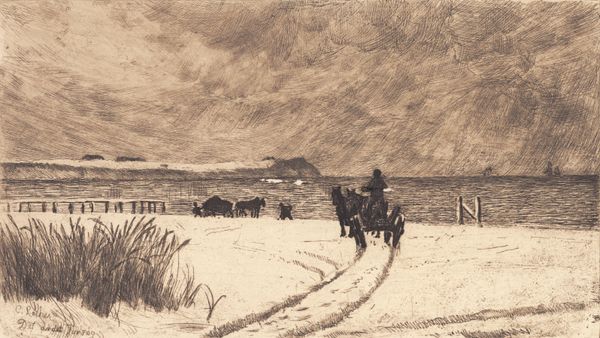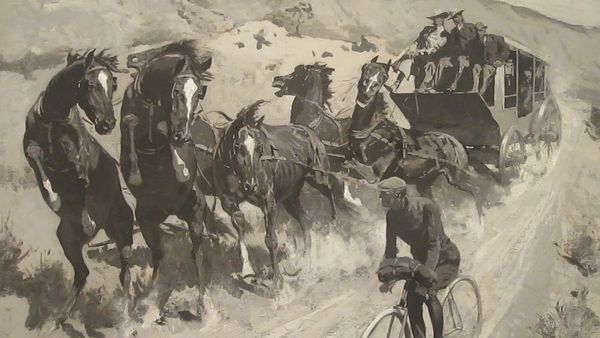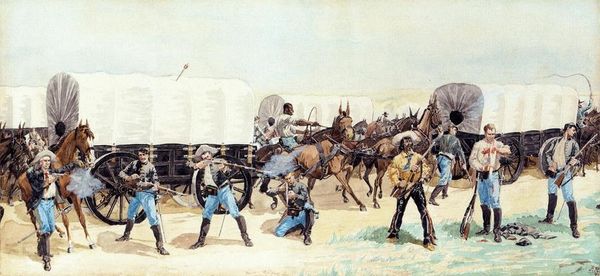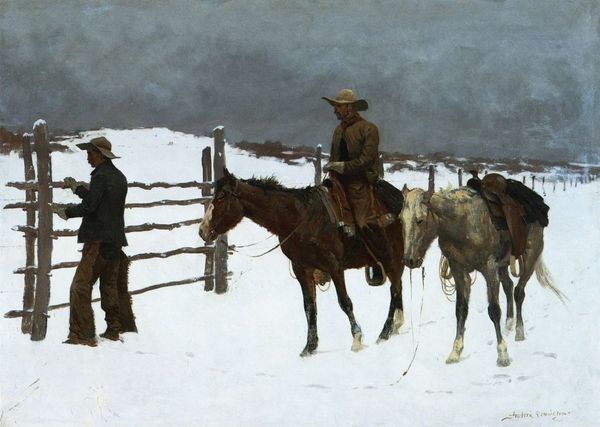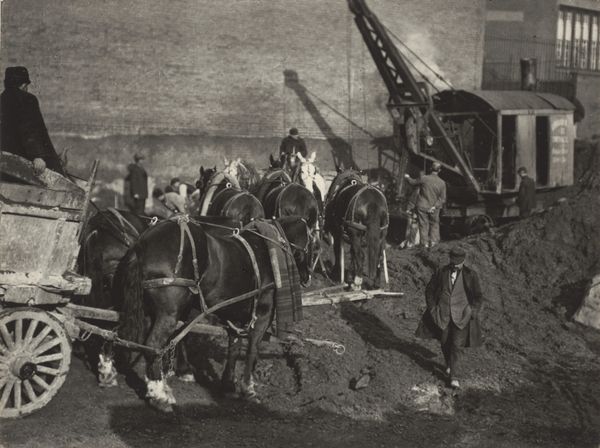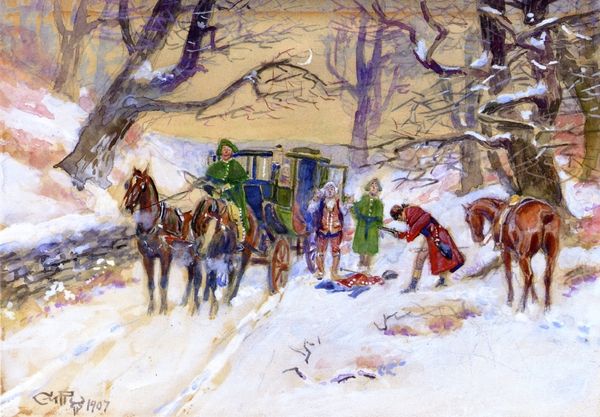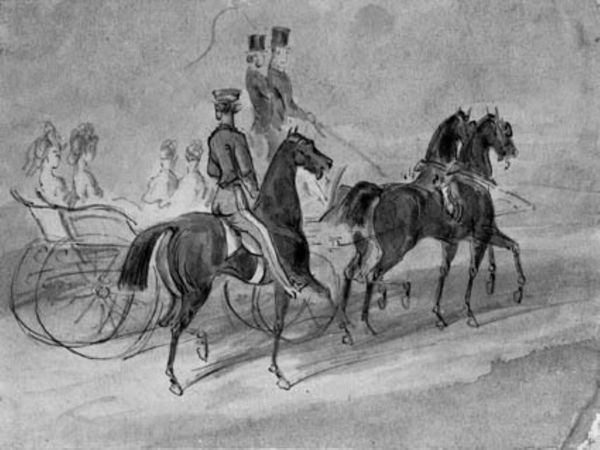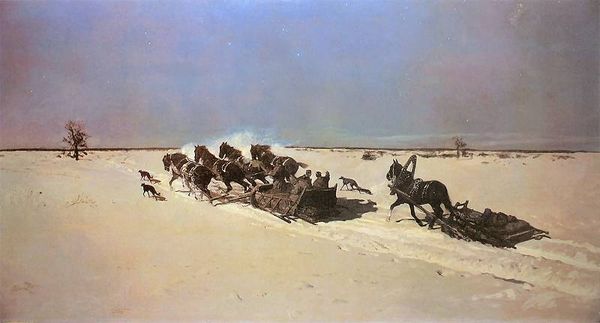
Copyright: Public domain
Editor: So, here we have Frederic Remington’s "The End of the Day," painted in 1904 with oil on canvas. The monochrome palette really evokes the harshness of winter. What's your take on it? Curator: This painting strikes me as a stark depiction of labor and its relationship to both the environment and societal structures. Notice how the horses and the worker are silhouetted against the snow, almost indistinguishable from the landscape itself. It makes me think about the exploitation inherent in the relationship between humans, animals, and the land, particularly during the era of westward expansion. What does that framing bring to your mind? Editor: It feels melancholic. Like everyone, horses and the worker are simply tired after a long day of… something, although it’s difficult to discern what they were doing exactly. Curator: Precisely. This ambiguity allows us to consider the larger implications of labor in a capitalist society. We're seeing a very romanticized, almost heroic view of the worker in American art. Who are they? What are they getting out of this work, in relation to the vast potential promised by American expansion? Is this truly the ‘end of the day’ for exploitation, or is it just a cyclical return to it each dawn? Editor: That reframing gives the piece a more critical edge than I initially perceived. Thanks, that’s something I'll definitely keep in mind. Curator: Absolutely! It's important to look at art beyond face value and to question what societal norms it is promoting. The deeper we probe, the richer the art becomes.
Comments
No comments
Be the first to comment and join the conversation on the ultimate creative platform.
